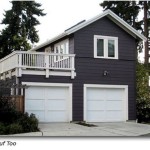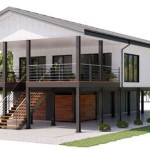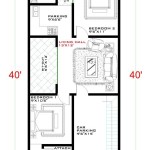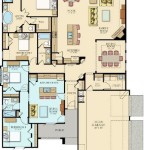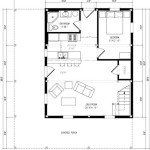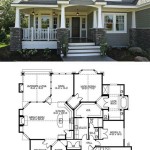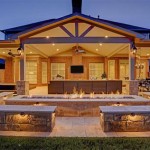Pool House Plans With Barriers and Facilities in Japan
Japan, an archipelago nation renowned for its meticulous attention to detail, innovative technology, and deep respect for safety and accessibility, presents a unique perspective on pool house design. Pool houses in Japan, especially those intended for public or semi-public use, often incorporate stringent building codes and accessibility guidelines rooted in facilitating inclusivity for individuals with disabilities and ensuring a safe recreational environment for all users. These designs are not merely aesthetic; they are functional spaces prioritized for safety, sanitation, and user comfort, often exceeding standards found in other countries.
The concept of a pool house in Japan extends beyond a simple changing room and storage space. It typically encompasses a comprehensive facility that caters to a wide range of needs, including secure entry and exit points, designated changing areas for both males and females, accessible restrooms equipped with specialized fixtures, shower facilities meticulously maintained for hygiene, and often, a small relaxation or waiting area. The integration of these elements is carefully planned to promote ease of use and a positive user experience, reflective of the Japanese philosophy of hospitality and meticulous service known as "omotenashi."
Barrier-free design principles are a fundamental aspect of pool house planning in Japan. This approach seeks to eliminate or mitigate physical obstacles that might prevent individuals with mobility impairments, visual impairments, or other disabilities from fully utilizing the facilities. This commitment to inclusivity translates into specific design features, such as ramps with appropriate gradients, textured paving for tactile guidance, visual contrast for enhanced visibility, and ample maneuvering space within changing rooms and restrooms.
Accessibility Considerations and Universal Design
Accessibility, sometimes referred to as universal design, is a cornerstone of pool house plans in Japan. This involves a comprehensive approach to ensure that the pool house is usable by all people, to the greatest extent possible, without the need for adaptation or specialized design. The application of this principle is evident in specific design choices related to the pathways, access points, and interior layouts of the facilities. Wide pathways, typically exceeding 1.5 meters in width, are implemented to allow for wheelchair maneuverability and unimpeded pedestrian flow. Gentle ramps with non-slip surfaces replace steps where possible, adhering to strict gradient regulations to ease navigation for individuals using wheelchairs or other mobility aids. Handrails are strategically positioned along ramps and walkways to provide support and stability. At entry points, automatic doors with sensor activation are frequently used, eliminating the need for manual operation and facilitating effortless access for all users, including those carrying bags or assisting children.
Within the pool house interior, the principles of universal design are further applied to create an inclusive and user-friendly environment. Changing rooms are designed with spacious layouts, providing ample room for individuals using wheelchairs or requiring assistance from caregivers. Adjustable-height benches are often included, allowing users to customize the seating to their preferred level. Grab bars are strategically placed within changing areas and restrooms to provide additional support and stability. Sinks and countertops are designed with knee clearance, accommodating individuals using wheelchairs. Faucets and soap dispensers are typically lever-operated or sensor-activated, eliminating the need for twisting or gripping motions that can be challenging for individuals with limited hand dexterity. The toilet facilities include accessible stalls with ample maneuvering space and grab bars on both sides of the toilet. Emergency call buttons are installed within the accessible stalls and shower areas, providing users with a means to summon assistance if needed.
Beyond physical accessibility, Japanese pool house plans also consider the needs of individuals with visual impairments. Tactile paving, such as raised dots or bars, is often incorporated into the flooring to provide directional guidance and warning signals. High-contrast signage with large, clear fonts is used throughout the facility to improve readability. Audio cues, such as announcements or automated guidance systems, may also be implemented to provide additional support for visually impaired users. Furthermore, the lighting design prioritizes even illumination and minimizes glare, creating a more comfortable and accessible environment for individuals with varying visual abilities.
Barrier Design for Water Safety
Water safety is paramount in pool house designs in Japan. Ensuring the safety of swimmers, both experienced and novice, is accomplished through a combination of physical barriers, clear signage, and diligent supervision. Fencing, typically made of durable, non-climbable materials such as tempered glass or reinforced metal, surrounds the pool area, preventing unauthorized access and minimizing the risk of accidental falls. These fences are required to meet specific height and spacing requirements to prevent children from climbing over or squeezing through. Gates leading to the pool area are equipped with self-closing and self-latching mechanisms, ensuring that they remain securely closed when not in use. The latching mechanisms are positioned high enough to be beyond the reach of young children, further enhancing safety.
In addition to fencing, pool house plans in Japan often incorporate other physical barriers to enhance water safety. Safety nets or covers may be used to prevent access to the pool when it is not in use, particularly during off-season periods or when maintenance is being performed. Lane dividers, typically made of floating ropes with brightly colored buoys, are used to separate swimming lanes and prevent collisions between swimmers. Depth markers are clearly displayed around the pool perimeter, indicating the water depth at various points. Nonslip surfaces are used around the pool deck to minimize the risk of slips and falls. Lifeguard chairs are strategically positioned to provide clear vantage points for monitoring the pool area. Emergency equipment, such as life rings and reaching poles, are readily available and easily accessible in case of emergency situations.
Effective communication plays a crucial role in promoting water safety. Clear and concise signage is prominently displayed throughout the pool area, providing information on pool rules, safety precautions, and emergency procedures. These signs are typically written in multiple languages, including Japanese, English, and other commonly spoken languages, to ensure that all users can understand the information. Depth markers are clearly visible and accurately indicate the water depth at various points. Warning signs are used to alert swimmers to potential hazards, such as slippery surfaces or deep water. Emergency contact information is readily available in case of accidents or medical emergencies.
Hygiene and Sanitation Facilities
Maintaining a high standard of hygiene and sanitation is an integral component of pool house design in Japan. The emphasis on cleanliness extends beyond mere aesthetics; it is a reflection of the Japanese cultural value of hygiene and a commitment to providing a safe and healthy environment for all users. Showers are mandatory before entering the pool, and this is typically enforced through prominent signage and the placement of shower facilities directly adjacent to the pool entrance. These showers are designed to remove dirt, sunscreen, and other contaminants from the body, helping to maintain the cleanliness of the pool water.
The pool house itself is equipped with a comprehensive range of sanitation facilities designed to promote hygiene and prevent the spread of germs. Changing rooms are regularly cleaned and disinfected to ensure a sanitary environment for users to change their clothes. Foot baths, typically filled with disinfectant solution, are often placed at the entrance to the pool house, helping to prevent the spread of foot fungus and other infections. Restrooms are equipped with touchless faucets, soap dispensers, and hand dryers, minimizing the risk of cross-contamination. The toilets are regularly cleaned and disinfected, and the facilities are designed to minimize the buildup of moisture and humidity, which can contribute to the growth of mold and bacteria.
Water quality management is a critical aspect of maintaining hygiene in pool facilities. Pool water is regularly tested and treated to ensure that it meets strict safety standards. Chlorination or other disinfection methods are used to kill bacteria and other pathogens. Filtration systems are used to remove debris and other contaminants from the water. The pool water is regularly circulated and refreshed to maintain its cleanliness. In addition to water quality management, the pool deck and surrounding areas are regularly cleaned and disinfected to prevent the buildup of algae and other contaminants. This includes regular sweeping, mopping, and scrubbing of the surfaces, as well as the use of specialized cleaning products designed for pool environments.
Pool house plans in Japan exemplify a holistic approach to recreational facility design, seamlessly integrating safety, accessibility, and hygiene into the architectural blueprint. The comprehensive implementation of universal design principles, stringent barrier protocols, and meticulous sanitation practices contribute to creating inclusive and safe environments for all users. This approach goes beyond simply meeting regulatory requirements; it embodies a commitment to user-centric design, reflecting the Japanese cultural values of respect, hospitality, and attention to detail.

75 Asian Pool House Ideas You Ll Love July 2024 Houzz

Japandi Pool Ideas Blend Serenity Style Mojo Boutique

Japanese Design Inspired Pool House And Spa Showcases Stunning Lake Views Decoist

Japanese Design Inspired Pool House And Spa Showcases Stunning Lake Views Decoist

75 Asian Pool House Ideas You Ll Love July 2024 Houzz

Japanese Central Courtyard Layout

Japanese House For The Suburbs

75 Asian Pool House Ideas You Ll Love July 2024 Houzz

Poolhouse With Outdoor Spaces 23452jd Architectural Designs House Plans

Courtyard Pool House Plans Luxury
Related Posts


